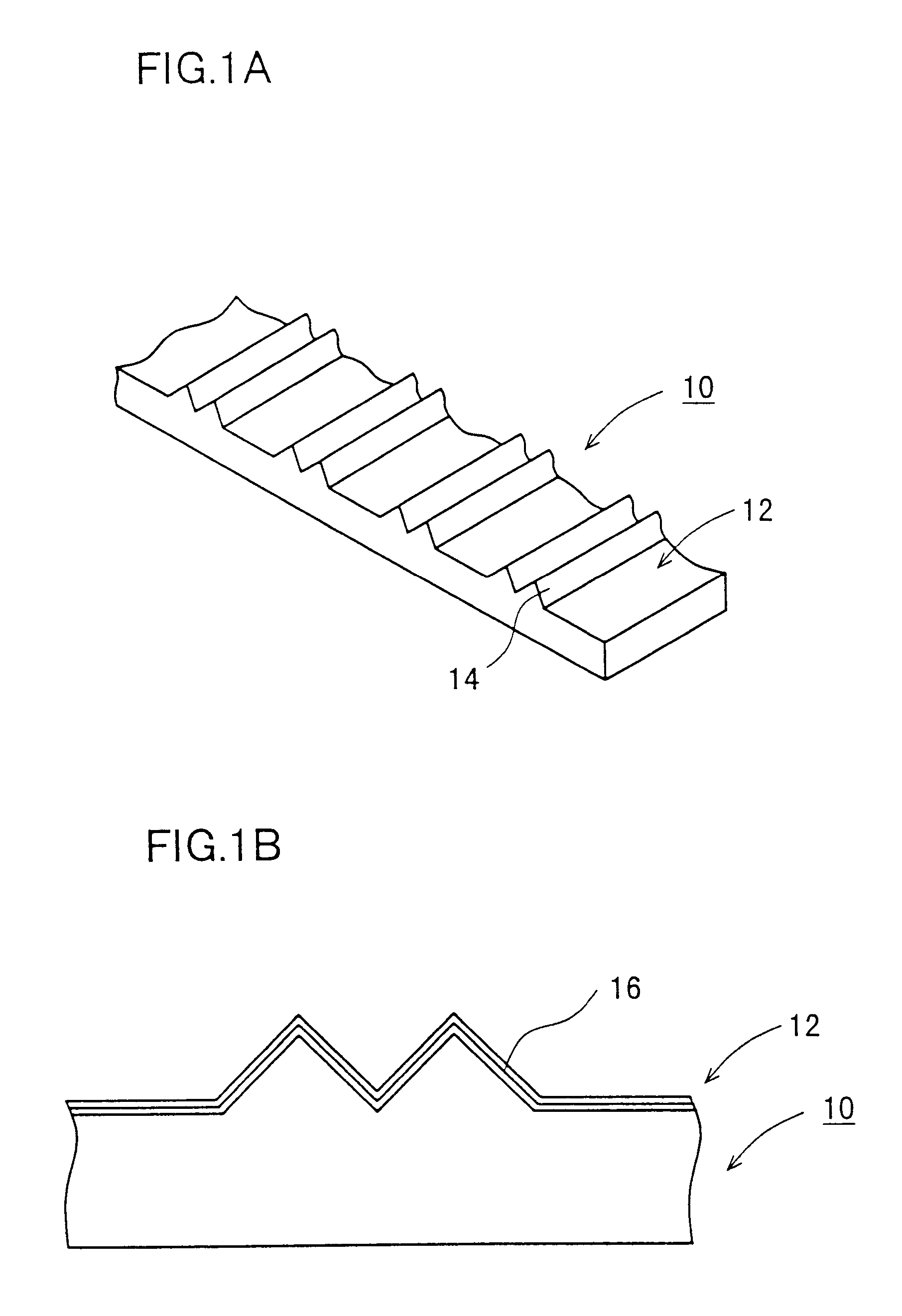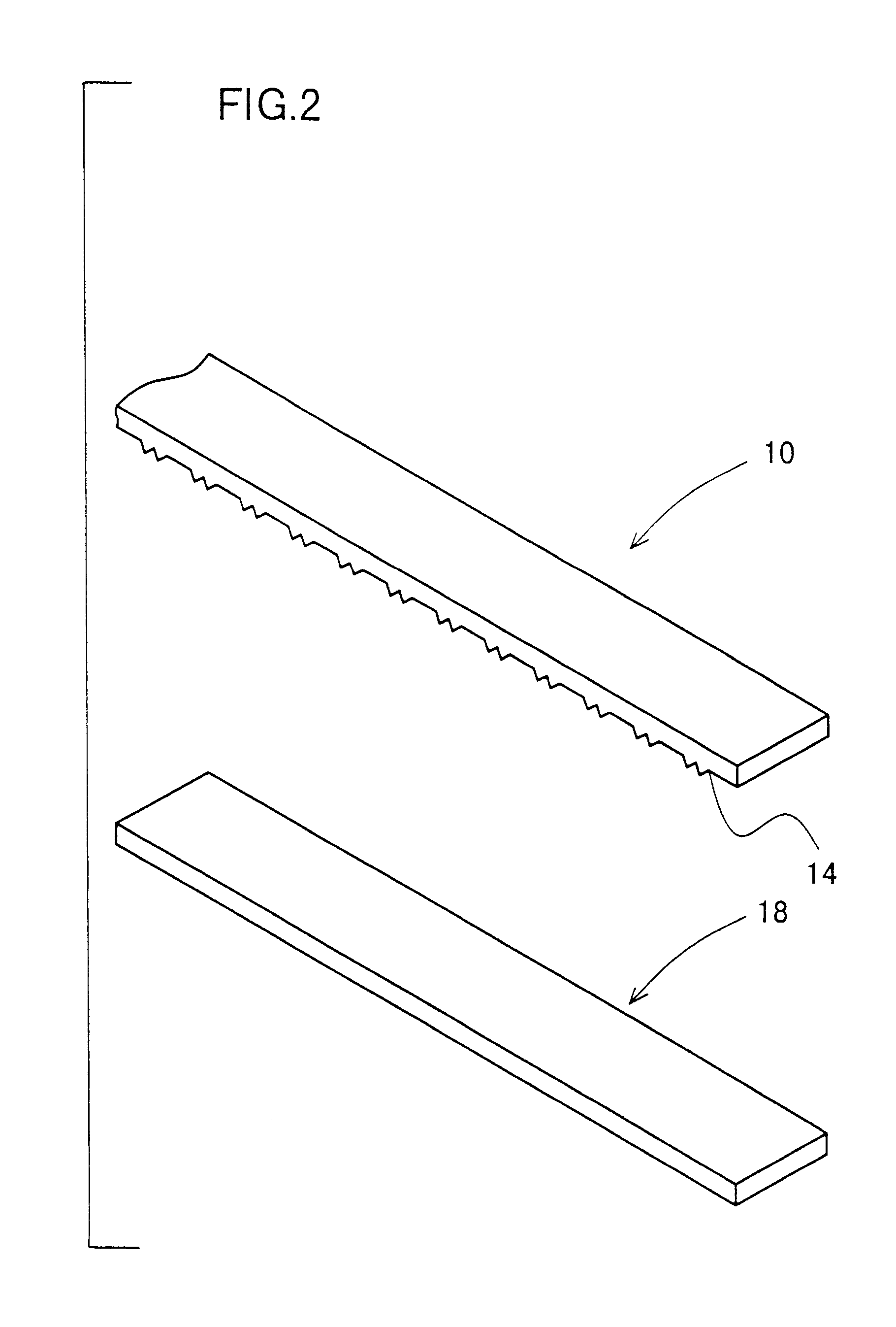Press-forming die for glass elements
- Summary
- Abstract
- Description
- Claims
- Application Information
AI Technical Summary
Benefits of technology
Problems solved by technology
Method used
Image
Examples
Embodiment Construction
, a die 10 is prepared, in which a platinum film having a thickness of 0.2 .mu.m is stacked (total film thickness: 0.20 .mu.m). In Example 2, a die 10 is prepared, in which a nickel thin film having a thickness of 0.05 .mu.m is stacked beforehand, and a platinum film having a thickness of 0.2 .mu.m is stacked thereon (total film thickness: 0.25 .mu.m).
Similarly, in Example 3, a die 10 is prepared, in which a nickel thin film having a thickness of 0.05 .mu.m, a platinum-iridium alloy thin film having a thickness of 0.2 .mu.m (platinum content: 40% by weight, iridium content: 60% by weight), and a platinum thin film having a thickness of 0.2 .mu.m are stacked in this order on the base material surface (total film thickness: 0.45 .mu.m).
In Example 4, a die 10 is prepared, in which a nickel thin film having.a thickness of 0.1 .mu.m, a platinum-iridium alloy thin film having a thickness of 1.45 .mu.m (platinum content: 40% by weight, iridium content: 60% by weight), and a platinum thin f...
PUM
| Property | Measurement | Unit |
|---|---|---|
| Percent by mass | aaaaa | aaaaa |
| Percent by mass | aaaaa | aaaaa |
| Angle | aaaaa | aaaaa |
Abstract
Description
Claims
Application Information
 Login to View More
Login to View More - R&D
- Intellectual Property
- Life Sciences
- Materials
- Tech Scout
- Unparalleled Data Quality
- Higher Quality Content
- 60% Fewer Hallucinations
Browse by: Latest US Patents, China's latest patents, Technical Efficacy Thesaurus, Application Domain, Technology Topic, Popular Technical Reports.
© 2025 PatSnap. All rights reserved.Legal|Privacy policy|Modern Slavery Act Transparency Statement|Sitemap|About US| Contact US: help@patsnap.com



